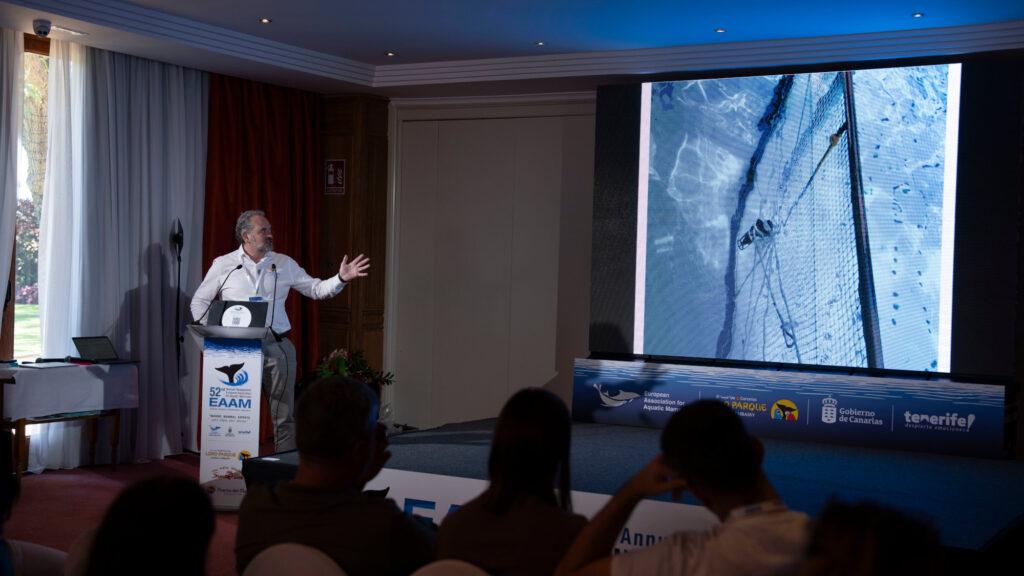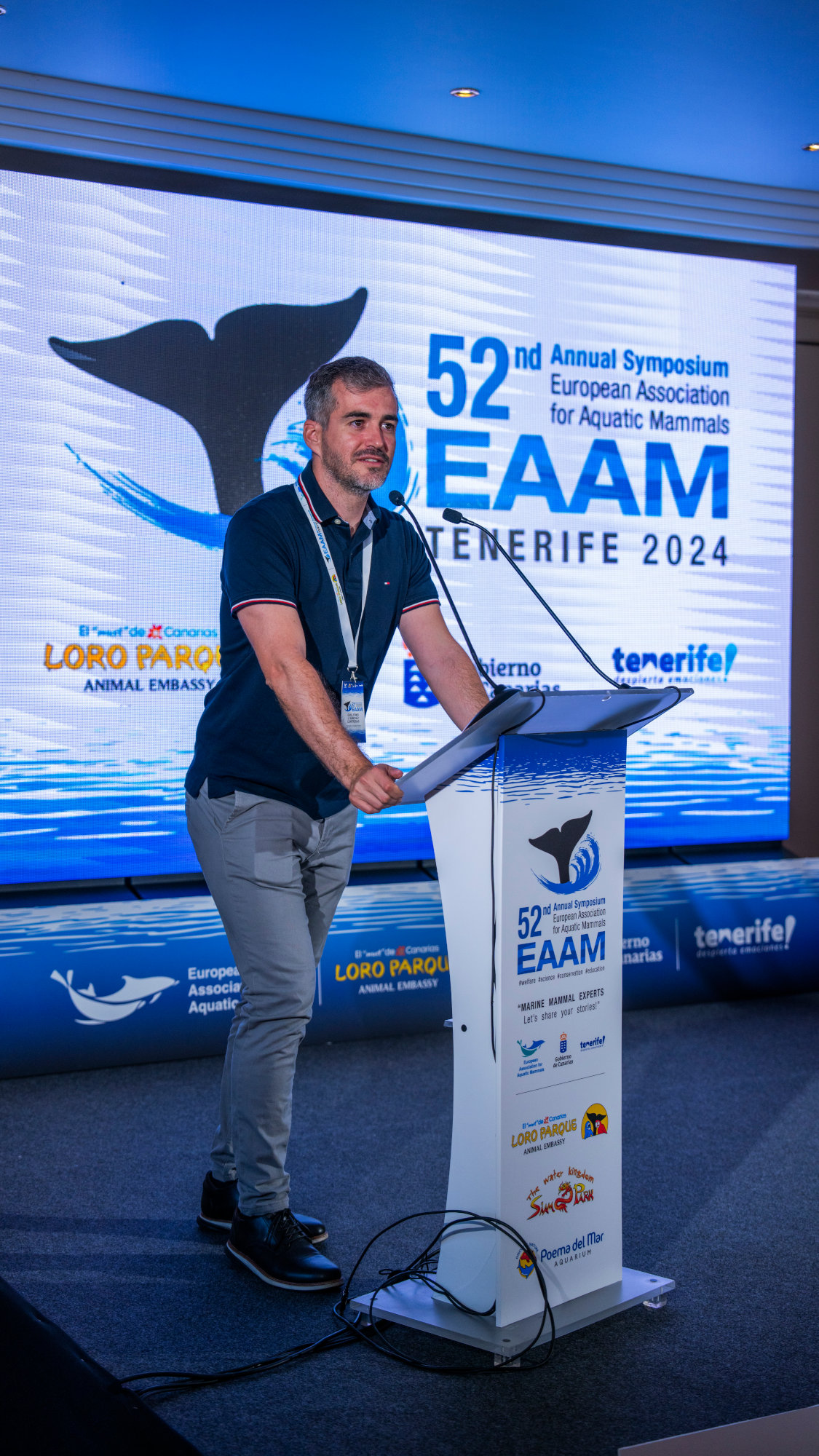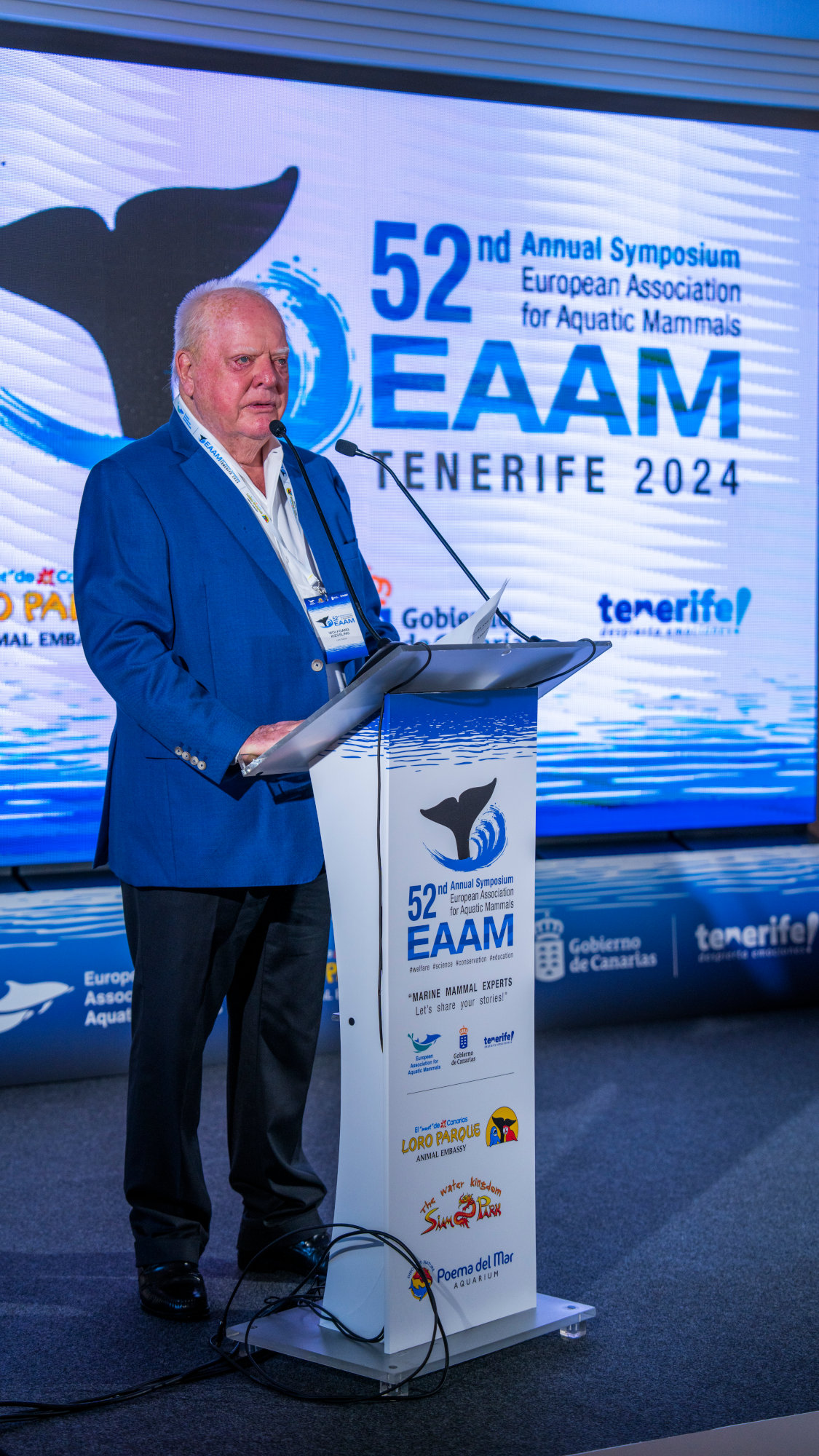The European Association of Aquatic Mammals annual symposium brought to the table advances in research and the need for collaboration between scientists and conservation bodies.
More than 100 aquatic mammals’ experts from around the world closed yesterday the 52nd Annual Symposium of the European Association of Aquatic Mammals (EAAM), a non-profit organisation established in 1972. Aquatic mammal experts include biologists, veterinarians, zoo and animal behaviourists, scientists, students and others who devote a significant amount of time to the welfare and conservation of marine mammals both in human care and in the wild.
The meeting was a moment of enormous importance for all the professionals working in this field, as it was an opportunity to share the important advances that have been made during the year.
The fact that it was held in Tenerife this year is a direct consequence of the quality of the island as a venue for all kinds of events. In this case, the Government of the Canary Islands and Turismo de Tenerife have sponsored this meeting organised by Loro Parque and held in the facilities of the Hotel Botánico & The Oriental Spa Garden. A luxury that has added even more interest to an event of worldwide importance.
Scientific advances and zoos
- Guillermo J. Sánchez Contreras
- Wolfgang Kiessling
One of the most relevant issues that was addressed was the link between the work of accredited zoos and the development of scientific advances that allow intervention in nature with the necessary knowledge to mitigate and even reverse threats. Lorenzo Von Fersen, current head of EAAM’s conservation committee, explained it very clearly.
“After this year’s terrible situation with the dolphins in the Tefé River in Brazil, where more than 160 Amazonian dolphins died as a result of drought, the collaboration with experts from different zoos, who provided knowledge about the management and biology of these species, made the rescue and recovery of the surviving dolphins a success,” he said.
Von Fersen stated that “from the experience gained in the dolphinaria, the effects of climate change on river dolphins can be mitigated”.
This collaboration is not limited to aquatic mammals, but extends to conservation action with all endangered species.
Studies linking caregiving under human care and in the wild
The International Union for Conservation of Nature (IUCN) recognises 25% of marine mammals as endangered. In order to reverse this situation, it is once again essential to have an in-depth knowledge of each endangered species. In the case of aquatic mammals, studies in the wild are extremely difficult. The mobility of the animals and the characteristics of the space mean that studies cannot be easily completed, providing all the data.
However, zoos committed to animal welfare, such as Loro Parque, can give a boost to these efforts: In 2021, Dr Sara Torres initiated a collaboration between Loro Parque’s dolphin department and the University of Southern Denmark, resulting in several successful research projects on hearing and echolocation in cetaceans. One of these was the development of an innovative device to measure hearing in freely moving animals.
This validation allowed scientists to measure hearing in wild dolphins for the first time, opening up opportunities to implement these techniques in larger species such as killer whales. A major step forward in this field.
Understanding orcas
Other protagonists of the symposium were the killer whales in the Strait of Gibraltar, famous for their appearance in the media for interacting with and causing damage to vessels in the area.
Dr. Renaud Stephanis, and Dr. Francisco Baringo with more than 20 years of experience, are well aware of the situation developing in this area.
“The problem seems to be multifactorial. In the sea there are not too many play elements to play with and the rudders of the boats and the jet of bubbles from their propellers seem to attract especially the young”. Dr Renaud explained.
The fact that these behaviours occur in specific areas may be due to the transmission of this behaviour from one area to another from parent to offspring. In this way, they would be attitudes typical of different groups of killer whales.
Once again, cooperation between zoos and scientists may provide solutions to this issue.
CIRCE has carried out a study on the interactions with killer whales that have been observed over the last 3 years on the coasts of the Iberian Peninsula. A study in which Loro Parque has been a constant collaborator. The research has provided numerous data on population dynamics, the fluidity of the social structure, behaviour and cultural transmission of the Iberian killer whale.
With regard to interactions with sailboats, several recommendations emerge from this study: in the event of an encounter, it is better not to stop the boat but to maintain a constant speed to reduce the interaction time and the risk of damage; create routes that respect the areas where the orcas stay to avoid sharing space. And, the most innovative: an anti-rudder breakage system, the result of work between the Loro Parque Fundación and the University of Cadiz, which aims to minimise the orcas’ interest in interacting with the boats and which will be presented soon, after testing its effectiveness with the collaboration of Loro Parque.













